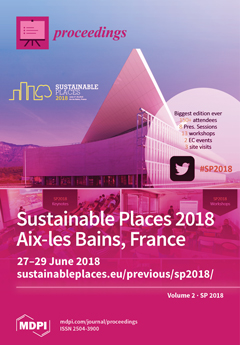Open AccessProceeding Paper
District Energy Systems: A Collaborative Exchange of Results on Planning, Operation and Modelling for Energy Efficiency
by
Tatiana Loureiro, Miika Rämä, Raymond Sterling, Marco Cozzini, Meritxell Vinyals, Michael Descamps, Wolfgang Birk, Gozde Unkaya, Federica Fuligni, Borna Doračić, Marin Petrovic, Dominik Rutz, Inés Arias, Sofia Lettenbichler, Ioannis Meintanis, Serafeim Moustakidis, Martin Buchholz, Reiner Buchholz, Mathieu Provost and Philipp Geyer
Cited by 3 | Viewed by 2937
Abstract
Workshop organized by INDIGO project as a collaborative activity among EU funded projects in the area of District Heating and Cooling. The objective of the workshop was twofold: (1) to create a cluster of European funded projects working in the area of District
[...] Read more.
Workshop organized by INDIGO project as a collaborative activity among EU funded projects in the area of District Heating and Cooling. The objective of the workshop was twofold: (1) to create a cluster of European funded projects working in the area of District Energy Systems; and (2) to create a networking opportunity in which to share experiences on the results and difficulties of the researches, and to identify synergies.
Full article



